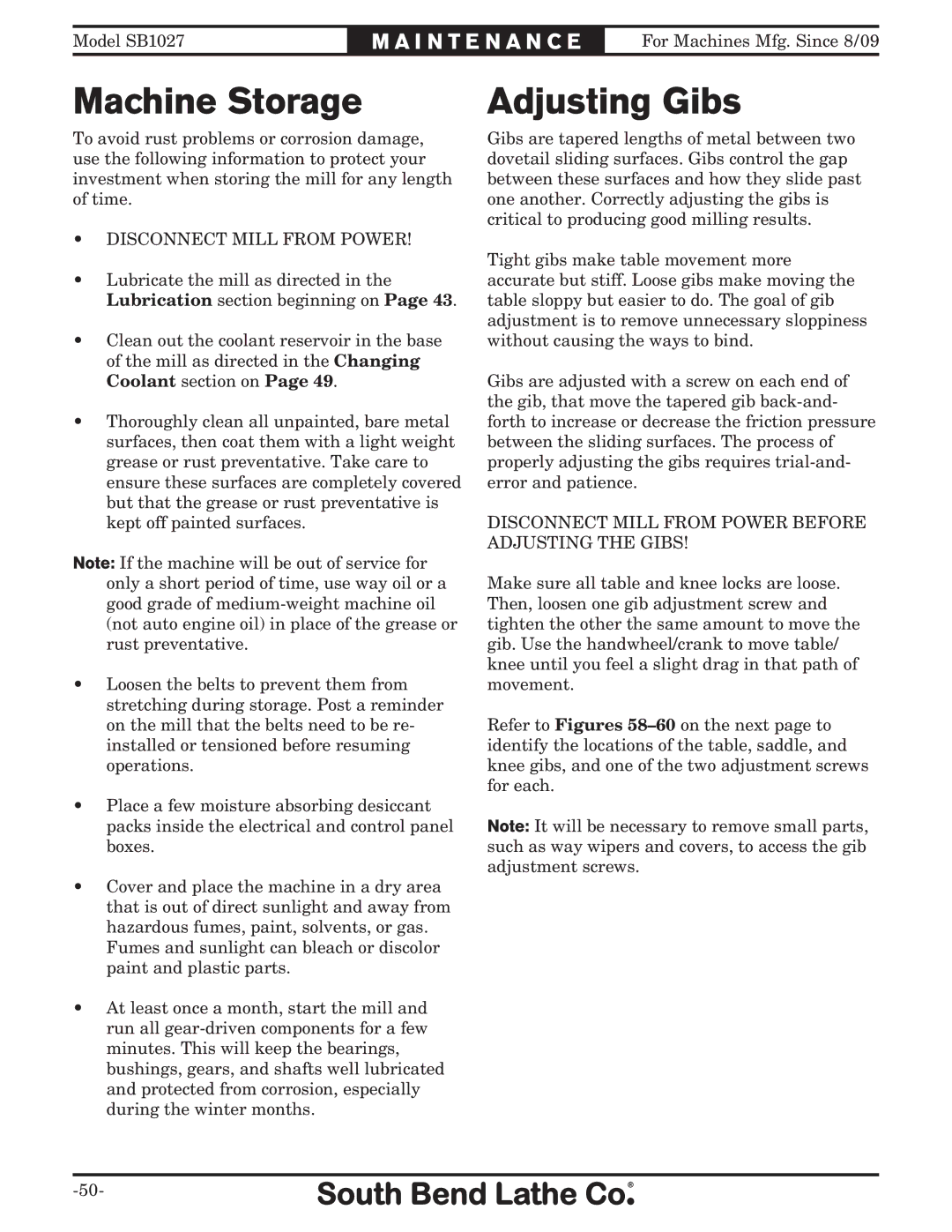Model SB1027 | M A I N T E N A N C E | For Machines Mfg. Since 8/09 |
Machine Storage
To avoid rust problems or corrosion damage, use the following information to protect your investment when storing the mill for any length of time.
•DISCONNECT MILL FROM POWER!
•Lubricate the mill as directed in the
Lubrication section beginning on Page 43.
•Clean out the coolant reservoir in the base of the mill as directed in the Changing Coolant section on Page 49.
•Thoroughly clean all unpainted, bare metal surfaces, then coat them with a light weight grease or rust preventative. Take care to ensure these surfaces are completely covered but that the grease or rust preventative is kept off painted surfaces.
Note: If the machine will be out of service for only a short period of time, use way oil or a good grade of
•Loosen the belts to prevent them from stretching during storage. Post a reminder on the mill that the belts need to be re- installed or tensioned before resuming operations.
•Place a few moisture absorbing desiccant packs inside the electrical and control panel boxes.
•Cover and place the machine in a dry area that is out of direct sunlight and away from hazardous fumes, paint, solvents, or gas.
Fumes and sunlight can bleach or discolor paint and plastic parts.
•At least once a month, start the mill and run all
Adjusting Gibs
Gibs are tapered lengths of metal between two dovetail sliding surfaces. Gibs control the gap between these surfaces and how they slide past one another. Correctly adjusting the gibs is critical to producing good milling results.
Tight gibs make table movement more accurate but stiff. Loose gibs make moving the table sloppy but easier to do. The goal of gib adjustment is to remove unnecessary sloppiness without causing the ways to bind.
Gibs are adjusted with a screw on each end of the gib, that move the tapered gib
DISCONNECT MILL FROM POWER BEFORE ADJUSTING THE GIBS!
Make sure all table and knee locks are loose. Then, loosen one gib adjustment screw and tighten the other the same amount to move the gib. Use the handwheel/crank to move table/ knee until you feel a slight drag in that path of movement.
Refer to Figures
Note: It will be necessary to remove small parts, such as way wipers and covers, to access the gib adjustment screws.
